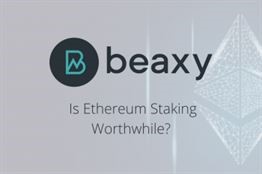Content
The node puts the B block at the forefront of its main chain, but at the same time maintains a reference to the B ‘block. The most common case is that the longest chain is the chain with the most blocks. If the number of blocks is the same, the total PoW is compared . However, “the longest chain wins” is easy to misunderstand that there may be multiple competing chains in the network . The correct understanding is that there are multiple paths in a chain, and nodes need to follow the path with the most PoW. Some people believe that an https://www.beaxy.com/faq/beaxys-guide-to-sending-wire-transactions/ should only refer to a block that “has no parent”. SPV clients don’t have a memory pool for the same reason they don’t relay transactions. They can’t independently verify that a transaction hasn’t yet been included in a block and that it only spends UTXOs, so they can’t know which transactions are eligible to be included in the next block. Once the IBD node is synced to the tip of the block chain, it will accept blocks sent through the regular block broadcasting described in a later subsection. Inventories are unique identifiers for information on the network.
When a peer shuts down, its memory pool is lost except for any transactions stored by its wallet. This means that never-mined unconfirmed transactions tend to slowly disappear from the network as peers restart or as they purge some transactions to make room in memory for others. By default, Bitcoin Core broadcasts blocks using direct headers announcement to any peers that have signalled with “sendheaders” and uses standard block relay for all peers that have not. Bitcoin Core will accept blocks sent using any of the methods described above. However, peers often leave the network or change IP addresses, so programs may need to make several different connection attempts at startup before a successful connection is made.
In a blockchain, the longest line of blocks is added to the main chain. Stale blocks are generated when two different miners relay their valid blocks almost at the same time. This causes the network to split into two competing versions of the blockchain until one of the blocks is discarded . Note that both blocks are verified and valid, but only one is attached to the main chain. In blockchain terms, orphan blocks are blocks mined at the same time as another block but not accepted by the blockchain. Most of the time, this is because there are not enough blocks generated from that block for the network to recognize it as the longest fork. The Bitcoin blockchain discards orphan blocks; however, other blockchains may use them for different purposes.
using orphan blocks
Once the miners found the parent block and linked it to one of the orphan blocks, miners would continue to mine on this block as the true chain with the longest proof of work. Once the IBD node receives a “headers” message with fewer than 2,000 headers from the sync node, it sends a “getheaders” message to each of its outbound peers to get their view of best header chain. By comparing the responses, it can easily determine if the headers it has downloaded belong to the best header chain reported by any of its outbound peers. Every node/computer in the cryptocurrency network is connected with other nodes and constantly exchanges data with them. Let’s say for example, that the last block in a cryptocurrency network is #100. This means that at that moment all miners worldwide are trying to solve the same block – #101. Once it is solved, a miner sends the solution to the network through it’s node. In the course of a few seconds or even milliseconds, all nodes in the network get information about block #101. The block goes through the verification process to make sure there is no fraud, and then the nodes wait for the next block – #102.
How Orphan Black Star Ari Millen Was Saved From The Chopping Block – Looper
How Orphan Black Star Ari Millen Was Saved From The Chopping Block.
Posted: Mon, 27 Jun 2022 07:00:00 GMT [source]
This causes the network to temporarily split off into two competing chains, resulting in two different histories of the Bitcoin blockchain. The split is resolved when miners add new blocks to one of the two version histories. Whichever history grows longer, this version is treated by the rest of the network as the true chain of blocks. These are blocks that were produced by building on a block that is no longer the active tip of the chain. Some nodes may have considered it to be the best block at some point, but they switched to another chain which does not contain the relevant block anymore. They are valid, verified, and their ancestry up to the genesis block is fully known – they’re just not currently ‘active’. The latter name originates from the fact that payouts from extinct blocks are denoted as “orphaned” in the reference client .
Check out CoinGeek’sBitcoin for Beginnerssection, the ultimate resource guide to learn more about Bitcoin—as originally envisioned by Satoshi Nakamoto—and blockchain. “We’ve all been told for ten years that orphans are bad and a security risk. But it’s simply not the case; it’s actually how Bitcoin is supposed to work,” he explained. This sharing of transactions in real time benefits the network greatly. It is this open and honest communication of network events as they are seen that is critical for the implementation of Simplified Payment Verification and scalability. Despite these slim odds, there are still instances where two competing miners produce a valid solution within a few seconds of one another. Regardless of whether the node has B or B ‘as the head, once block C is added after block B, block B’ will be discarded. What this means is that the chain with the most cumulative PoW will be the valid or “main” chain accepted by the network. This rule exists to prevent an individual or group of individuals from outpacing the collective network (unless said group represents more than 50% of that network).
Subscribe to our weekly mailing list and get latest crypto news, resources and guides to your email!
An orphaned block is a block where the parent block does not exist or is unknown. These types of orphaned blocks are formed in older versions of the Bitcoin core software, where the network nodes had the ability to receive blocks even despite the lack of data about their ancestor. There will be some blocks which are created, but not accepted by the block chain network. Orphan blocks are verified and valid blocks, but not accepted by the block chain network due to a time lag in the acceptance of the block. Orphan Blocks are the rejected blocks which are very much valid.

Transactions which are mined into blocks that later become stale blocks may be added back into the memory pool. These re-added transactions may be re-removed from the pool almost immediately if the replacement blocks include them. This is the case in Bitcoin Core, which removes stale blocks from the chain one by one, starting with the tip . As each block is removed, its transactions are added back to the memory pool.
Tag Archives: orphan blocks
With Bitcoin witnessing a major core update in 2015, the process of having a Bitcoin orphan block is no longer possible. Because block generation time in Ethereum is fast, miners can verify blocks concurrently. So, to confirm, this chart at blockchain.com is showing what you prefer to call extinct blocks. Nice explanation Pieter, could you please elaborate on details of current download mechanism that Bitcoin Core uses? Consensus is the ideal and the method of coordination between individuals in a decentralized system. Consensus is achieved at the development level with regards to changes to the Bitcoin protocol, and it is also achieved with regards to agreement on the state of the blockchain. Indonesia’s monetary authority is advancing with a project to issue a digital version of the national fiat for wholesale transactions. It plans to release the conceptual design of the future digital rupiah by the end of 2022, Governor Perry Warjiyo revealed in a briefing on Thursday.
To tackle this problem, Ethereum developers introduced the GHOST protocol, where GHOST means “Greedy Heaviest Observed Subtree”. However, the term orphan block is still widely used in the cryptocurrency space when referring to valid mined blocks that have been discarded. Technically, these blocks should be called “stale blocks” or “extinct blocks,” but because the client denotes their block rewards as “orphaned,” most people call them orphan blocks. So despite having a known parent block, most people refer to those blocks as orphan blocks rather than stale blocks. Headers-first nodes avoid some of this complexity by always requesting block headers with the “getheaders” message before requesting a block with the “getdata” message. If, despite this, the block received in the “block” message is an orphan block, a headers-first node will discard it immediately.
These transactions lack parental income sources at the time they are processed, typically have a lower transaction fee per byte than all other transactions, or have a larger size than other received transactions. Orphan blocks are also known as stale blocks or detached blocks. Since it is delayed, it doesn’t become an uncle block—though it qualifies—only if it would have been validated within the seven blocks after the first block was confirmed. However, due to lagging, these valid blocks aren’t included in the longest chain and, therefore, not part of the canonical truth. But what happens if two miners solve block 101 at the same time?. Miner A solved the block a bit earlier and sent the information about the block to 60 nodes. Read more about eth to usd calculator google here. Miner B finished later and sent the information to only 40 nodes. To many, there is no need to explain what the blockchain is, but let’s take a closer look at the chain itself. In the Bitcoin network, a new block is created every 10 minutes, whereas in the Ethereum network it’s every 14 seconds.
sim chef pic.twitter.com/ubus33mCzD
— thaina (@orphanblock) July 23, 2022
This requires block propagation, the sending of blocks between nodes, to be as fast as possible. It is also necessary to note, that the term “orphan block” can also be used for other cases when the block does not have the data about its parent. In the older versions of Bitcoin Core software, the data of block ancestry was not absolutely necessary. It was possible, that network notes accepted blocks even when such data was missing, and such block were called orphaned. Blocks are data storage units used to store transactions on a blockchain network. They are usually linked to each other in chains forming the blockchain. A block is generated when miners solve certain complex calculations or algorithms storing transaction information and open a new block. An “orphan block” is a well-formed block with valid proof of work which has been rejected by Miners and does not form part of the longest chain of proof of work. As the block in question has not been accepted, the Block Reward and the transaction fees are no longer spendable on the difficulty wise-longest well-formed Blockchain. This phenomenon must be taken into account by mining pools that use any payout strategy other than “proportional”.
more stack exchange communities
It finds that block 0 matches, so it replies with 2,000 header starting from block 1. It sends these header hashes in the “headers” message illustrated below. Although orphan block can be quite a headache for miners, they actually occur more often than most Bitcoin enthusiasts would like to admit. Blockchain.info keeps track of all the orphaned blocks that appear on the network, and there is usually 1-3 of these mishaps every single day of the week. There is a new block mined roughly every ten minutes, which means there are 144 block rewards available to miners every day. This also means a little over 1% of the blocks that are mined every day are orphaned. In conclusion, orphan blocks are not common unless in the case of an attack on the blockchain. But stale blocks are relatively common and often occur on decentralized networks. It is estimated that 1 to 3 out of all the blocks mined in a day is stale blocks; while some networks have more, Bitcoin’s daily average falls under 0.1. An orphan block often originates when two Miners produce a block around the same point in time.
como que a vai superar assim
— agatha (@effectagatha) July 23, 2022
I tried the blocks every way around yet they really just don’t work together. Here’s what a table of them looks like – that’s going to be one great charity quilt. Do you think when you find a draft blog post that’s almost 12 months old it’s too late to post it?!!! If I didn’t own up to it you’d probably never have realised but some of my fellow NYC Metro MOD Quilt Guild members might so I thought I’d better ‘fess. This is the second paragraph containing some more text than the first one. Six U.S. lawmakers have written a letter to the EPA and the DOE arguing that U.S.-based mining operations should be required to report their emissions and energy use.
I feel bad to cut up everyone’s work but I think it’s the only way to disperse the colours throughout the quilt top and break down the way each of these blocks currently stands alone. The first problem as I see it is there’s no commonality amongst the blocks, no one element pulling them all together – be it a fabric print, colour or design element. The second is the huge difference in everyone’s understanding of the term ‘low volume’. Those things said I want to find a way to make these blocks work.
Instead it should be thought that multiple paths can be taken in a chain and nodes are expected to follow the path with the most PoW. Each blocks-first peer that wants the block replies with a “getdata” message requesting the full block. Messages with the IP addresses and port numbers of other peers on the network, providing a fully decentralized method of peer discovery. Bitcoin Core keeps a record of known peers in a persistent on-disk database which usually allows it to connect directly to those peers on subsequent startups without having to use DNS seeds. Also, these blocks add no value to miners or the mining process which is why they need to be avoided.
- Then both nodes send a “verack” message to the other node to indicate the connection has been established.
- This event occurs when two miners produce valid blocks a similar times.
- It is this open and honest communication of network events as they are seen that is critical for the implementation of Simplified Payment Verification and scalability.
- Blocks-first nodes may download orphan blocks—blocks whose previous block header hash field refers to a block header this node hasn’t seen yet.
All transactions from the discarded fork return to the mempool, so they can be accepted in the next blocks. Ethereum awards miners who created ommer blocks with smaller rewards and transaction fees—at least until it switches to a proof-of-stake consensus mechanism. This means that by the time a miner produces a valid block, most transactions in it should have already been seen and validated by other network nodes. Orphan blocks were temporarily stored in the orphan block pool where they remained until miners found a parent block for the orphan.
In Ethereum and other Dagger-Hashimoto cryptocurrency networks, such blocks are called uncle blocks. The longest chain prevails while the other is abandoned as a general rule; while both blocks are verified and valid in this case, only one of them can be attached to the main chain. However, there also exist real orphan blocks, with orphan in its original meaning of “having no parent”. These are blocks received by a node that does not have its entire ancestry and thus cannot be validated. Nodes keep such blocks in memory, while asking their peers to fill in the gap of their history.









